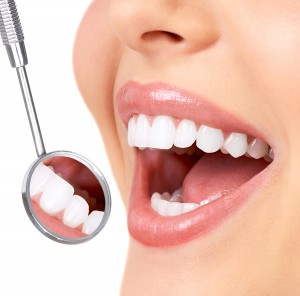A dentist in California is hard to find. This is because The Golden State is suffering from a shortage as more and more dental professionals have made the decision to practice out of state, according to a health policy brief by the UCLA Center for Health Policy Research.
Although the average dentist-patient ratio in California was 3.1 dentists for every 5,000 patients in 2012, there were various regions of the state that had lopsided ratios – the San Joaquin Valley, for instance, maintained a ratio of 2.4 dentists for each 5,000 patients, compared with 5.1 dentists per 5,000 patients in the San Francisco Bay Area.

However, the number of new licensed dentists practicing specialized dentistry jumped to 13 percent in 2012, a six percent increase from four years prior.
“There is a lopsided distribution of dentists. They cluster in areas like San Francisco and Southern California, but don’t settle in rural and underserved areas,” said Nadereh Pourat, director of research at the UCLA center and lead author of the study, in a statement. “Good access to dental care depends on having a robust supply of new dentists in California and we need a new generation of dentists to replace the many dentists who are close to retirement”
What are some of the reasons they’re exiting the state? Financially, predominantly. California’s economic downturn, ubiquity of dentists in more affluent areas and the elimination of Medi-Cal dental reimbursements are few of the biggest factors affecting dentists.
UCLA argues that the solution to get dentists to offer their services in underpopulated and underserved areas is to improve Medi-Cal reimbursement rates, offer small business loans and assist dental school graduates with student loan repayments.
It was reported earlier this month that the cost of providing health and dental benefits to current and future retirees increased by $730 million in a one-year period to a present grand total of $64 billion. The unfunded liability has been lower than expected because of fewer healthcare claims and lesser than projected inflation.
The issue of a diminished dentist-patient ratio isn’t just a statewide matter. Dental Economics published a report that highlighted the ratio will decrease further until at least the year 2020 – there have been uptakes in the number of part-time and specialty dentists nationwide, though.
The global dental industry is forecasted to be worth $26 billion by the end of the year, growing at a rate of 6.8 percent annually, according to a report from the Industry Growth Group. The reason for the immense increase is the market demand for dental biomaterial and dental implants. Another reason for the large growth is the boost in demand in developing countries, such as China and India, where both countries will maintain a market volume of dental implants, for instance, of $400 million within the next three years.
The dental industry does provide a difficult market for the average dentist. EvanCarmichael.com listed five primary things that affect a dentist’s success or failure throughout his career in the profession:
- Lawsuits
- Staff
- Job satisfaction
- Exit strategy
- Retirement affordability




